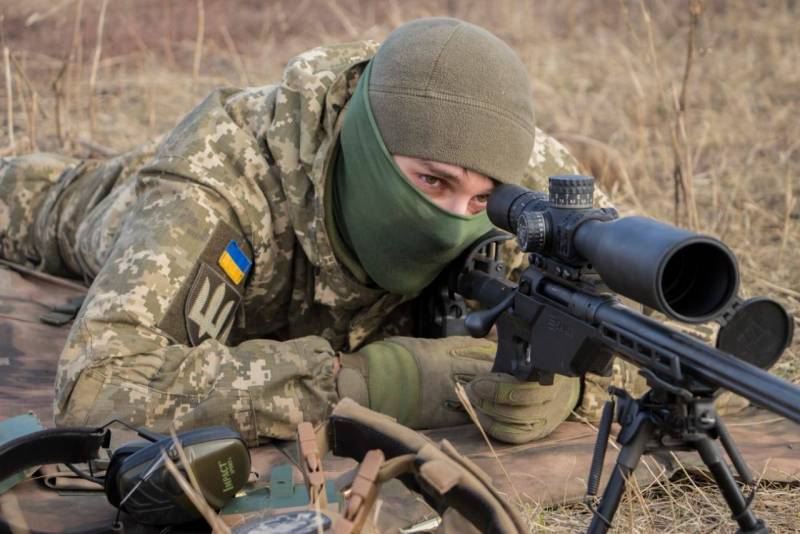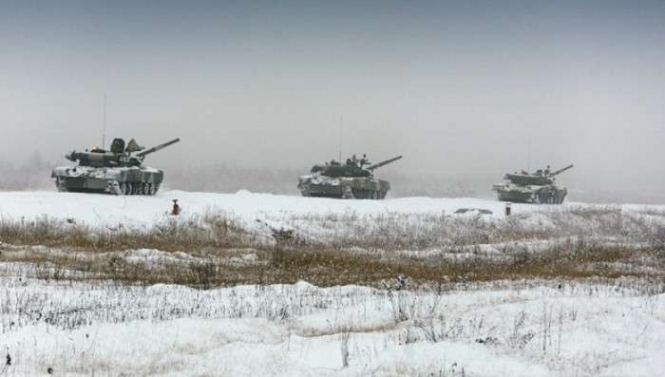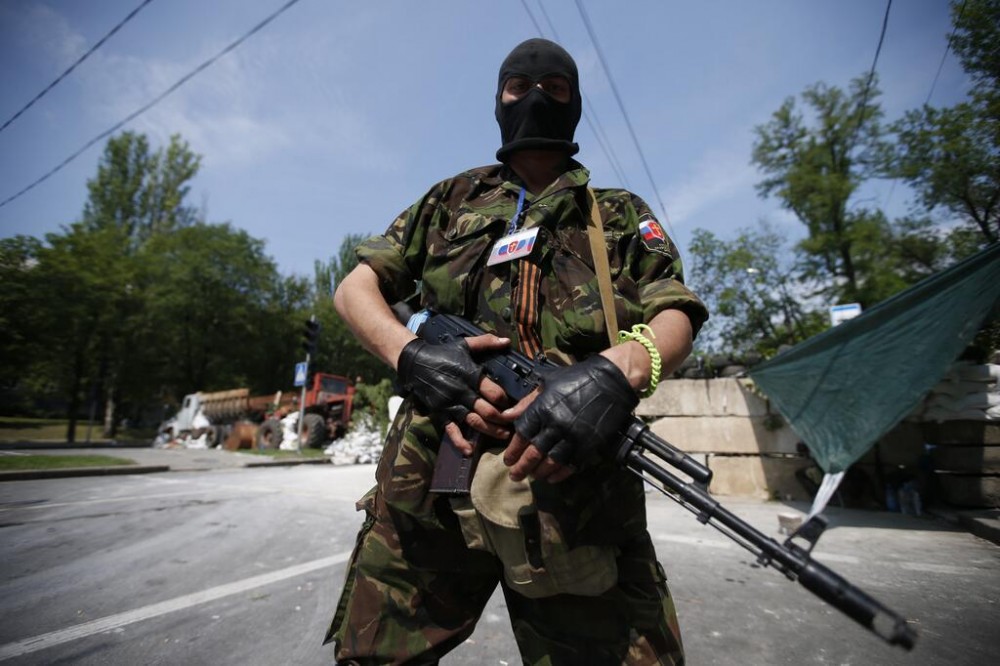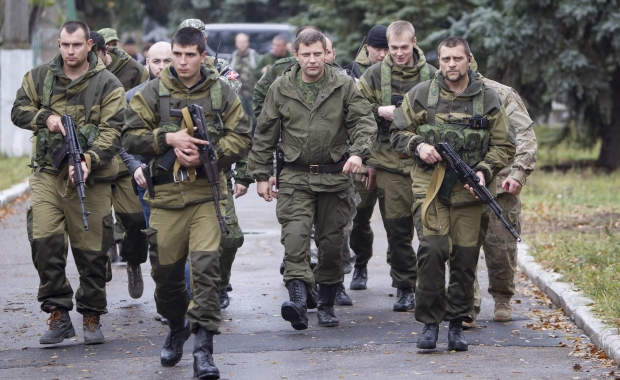Ruslan Shpakovych, a sniper training instructor with the Come Back Alive Foundation which supports the Ukrainian Army by providing equipment and training, a calm and soft-spoken man, shares his live combat experience in the Russo-Ukrainian war.
Sniper vs sniper

As they say in the army, the best remedy against a sniper is a 120mm mortar. For example, if there’s gunfire from a certain area, then four or five mortars will be more effective than a sniper duel. Of course, it won’t be so spectacular, but we’ll be sure no one will shoot from there, especially if the mortars are launched very quickly and effectively. No enemy sniper will take up a position in the area.
Unfortunately, military commanders do not always understand such subtleties. Let’s say the enemy fires a single shot somewhere or even hits a Ukrainian soldier… the command immediately sends in a sniper group. But, that turns out to be pretty useless, because there’s no one there anymore. If an enemy sniper was there, he would have already moved to another position, and the position that our snipers are surveilling will remain empty for some time.
The main problem is that headquarters do not fully understand how to use snipers.
Generally speaking, a sniper can determine from which enemy location it is convenient to install a firing position. This might be a potential position for an enemy sniper, so it should be monitored separately. Of course, it requires some experience to understand from which place you can shoot, and from which position it would be unfeasible or very difficult to do so.
There are few convenient firing positions on the front line. You cannot just come and shoot from anywhere. Nothing may be visible, either in the prone position or even in the sitting or standing position.
It’s not like in the movies
The Hollywood stereotype, where a sniper lies quietly in a raging blizzard and watches his target through a sighting device for hours on end -- those are all fairy tales. If you watch anything intently for half an hour to an hour, you may partially lose your vision. And forget about making an effective shot, especially at a great distance! Nowadays, a sniper can fire at targets at a distance of 1-2 km. Therefore, Ukrainian snipers have long since switched to complex sniper surveillance and management systems.
We assemble such sets ourselves, on a volunteer basis. They’re much simpler, but no less effective, even though we use civilian items for many of the components. The camera and surveillance equipment are ordinary devices, but we use a high-quality camera on a tripod, which is controlled remotely and connected to the screen via a cable.
The screen is installed in a secure place, where it will be easy to observe the area for several days. Sometimes, this surveillance lasts a week. We take turns watching and viewing images on the screen, and if necessary, making video captures. At night, instead of a camera, we use thermal imaging binoculars, which are quite effective.
To function in this mode, we need to work with a group of three or four people. Two snipers, one doing the surveillance, another communicating with other units and groups. If they find a target, and it needs to be worked out, then one or two snipers get ready and advance to the position; he activates the video recording, fires one or several shots… it all depends on the situation.
Many videos of Ukrainian snipers working on the frontlines have begun appearing on Telegram channels. I don’t quite understand who posts them or who allows servicemen or others to post them. Personally, I’m categorically against it.
As for the positions, it all depends on the terrain. Sometimes you have to move around quite a lot; sometimes you can shoot directly from your position.
But, snipers tend to shoot less and less from these positions, because they’ve all been used beforehand, so it’s quite risky to take up position and shoot from there. They usually look for a perfect location, but the main requirement is good visibility.
Even if we take a perfectly flat surface, like a football field, and the shooter lies somewhere quietly, he won’t see anything at a distance of 400 meters. So, he has to search for an elevated area in the terrain, a small hill.
In World War II, when the shooting was at a distance of 70-100 meters, snipers could raise their heads a little to have some visibility. Today, they operate at a distance of about one kilometer
. It’s not always possible to get closer. Sometimes the terrain is difficult or not at all secure for sniper work.
In some cases, the shooting distance can be much greater. We’ve actually shot effectively at targets that were over two kilometers away. But, of course, that’s a very delicate job and it’s hard to calculate such a shot. Plus, you need a bit of luck.
Imagine having to calculate the wind and other variables at such a distance! Thus, at a distance of one kilometer, with a crosswind speed of two to three meters per second - and that’s a pretty weak wind - the bullet deflects more than a meter. You must calculate everything when shooting. And then, we all know that a target doesn’t stand still… you need to calculate his movements and his direction a few seconds ahead. Normally, a bullet travels two kilometers in 4-5 seconds.
A sniper can take out a camera at a distance of one kilometer. If you can’t hit it with the first shot, you can fire two or three more rounds. The Russians have a centralized procurement system for cameras. They work with both expensive and cheap cameras. We work with whatever we have.
The government can’t supply us with such equipment, because Ukraine doesn’t produce it, and our state doesn’t have a centralized procurement system. But, we don’t need a lot of this equipment, so I really don’t know what the problem is.
Here is the video from Brooks' publication. Viewer discretion advised.
What you’re looking at is a Ukrainian sniper team laying in overwatch near a trench line manned by Russian proxies. It’s the middle of the night, and the enemy fighters have no idea that their enemy can see them clear as day. In the past, a flashlight or a smoldering cigarette could give away your position. Now, body heat alone is enough to give your position away and get you killed.
Find out more about Bilozerska by clicking the button below,

In 2018, Olena attended Officer Training Courses at the I. Chernyakhovsky National Defence University of Ukraine, majoring in Artillery, and subsequently signed a contract with the Armed Forces.
In 2018-2020, she served as an artillery platoon commander in the 503rd Separate Navy Infantry Battalion. On October 13, 2018 she was awarded the Order For Courage, III degree. Olena is currently a reserve officer in the Armed Forces of Ukraine.
Sniper training
We don’t have enough well-trained Ukrainian snipers yet. It will take some time. We actually started training military snipers only after 2017. There were some before that, but it wasn’t systematic.
Police snipers have their own school, and it has nothing to do with military snipers. There is a clear difference between the two. Police snipers don’t usually shoot at a distance of more than 300 meters; during counter-terrorist operations, the distance is about 70 meters. They often shoot at 30 meters. It’s important to hit a specific point of a target and destroy it immediately.
Military snipers can hit any point so as to prevent the enemy from fighting. Therefore, we train and prepare in a different way.
It all started in 2017. Currently, our snipers train a lot and very seriously. Our recruits have a much better level than those in 2014 or 2015.

Ukrainian military snipers in the Donbas war proved to be an effective force on the battlefield, able to precisely strike long-range enemy targets, conduct indispensable reconnaissance of enemy movements and positions, as well as to demoralize enemy troops.
Weapons of Ukrainian snipers
In our current conditions, snipers work better with a 338 Magnum caliber rifle, which is highly accurate over distances of more than a kilometer. But, our troops also have more powerful weapons, which were mostly supplied by volunteers. Almost 90% of our rifles are American.
We also have Austrian and Finnish and a few English rifles; the latter are high-quality weapons, but they’re very expensive; one unit costs about UAH 500,000 ($18,000). All of these rifles were purchased by volunteers.

Although these rifles were never adopted officially, they were approved for use. I know a very small group of people who have systematically donated funds for this purpose. A lot of money was donated privately by one person, then help came from the Roshen Corporation, and, of course, the government also bought some.
The rifle is not the most expensive component of a sniper’s gear, which is very expensive. A kit usually includes ammunition, a rifle, a sighting device, various attachments – scope mounts, bipods, as well as rangefinders, surveillance devices, portable weather stations. The rifle itself is only about 15% of the total cost. A good sighting device is more expensive than a rifle. The price of a rifle, which was first purchased for us by volunteers, amounted to about UAH 180,000 ($6,500). But, they managed to get a significant discount at different weapons stores.
The Ukrainian army still can’t do without its volunteers: opinion
We have information that the Ukrainian company Zbroya is finalizing its Magnum-class rifle and perhaps next year we’ll be able to use it. This will be a good solution as these rifles can be inspected, serviced, and repaired in Ukraine. The state doesn’t have an adequate material base to service the sniper rifles we have today and we’re not allowed to service registered weapons in private workshops. This requires a special license. Therefore, once again, we resolve the problem by relying on volunteers.
Today, we have enough weapons and ammunition, and I’d say that 90% of our trained snipers are provided for. But, I have to say that Ukrainian volunteers purchased most of our weapons. The Ukrainian army has officially adopted 308 caliber weapons, which are mostly used bymarksmen, and not snipers.
Well, this weapon is not so bad, and it’s manufactured by a Ukrainian company and will soon be available with technical support. But, it’s not as powerful as a good sniper weapon as the shooting range doesn’t exceed 500-600 meters.
Russian and American snipers
Russian snipers work mostly in groups. The Russian army has many skilled and professional snipers. They also train local militants in the occupied territories, but they don’t have a very good level.
The United Kingdom has imposed sanctions on the supply of sniper rifles and other weapons to Russia, but somehow Russia managed to acquire them, perhaps even before the sanctions were imposed.

Of course, Russia produces some of its sniper equipment. They manufacture thermal imagers but purchase the components for these devices -- especially the matrix -- in China. These high-quality components are quite expensive.
When all is said and done, the Russians have better thermal weapon sights than we do. Consequently, they get a much better view of the surroundings. Until last year, volunteer groups delivered 90% of all the thermal imagers to our troops. Only last year did the Ukrainian government finally purchase a large batch of thermal imagers.
The fact is that they fought against the Mujahideen and Taliban in Afghanistan, where they used devices that gave them a significant advantage over the enemy. But, that doesn’t work here. Our enemy is much better equipped and prepared.
For example, Americans never used suppressors (silencers) to shoot at a distant target. But we do. Not to reduce the sound of gunfire -- the suppressor doesn’t really muffle the sound of a sniper rifle shot, because a sniper rifle bullet travels at supersonic speed. The sound of a bullet traveling at Mach 2 or 3 is almost equal to the sound of the explosion that launched that bullet. This small sonic boom cannot be suppressed. Therefore, the main task of our suppressor is not to eliminate the sound, but to reduce the muzzle flash visible to the enemy. Therefore, Americans have now included suppressors in their sniper kits.
Sniper training and competition
[embedyt] https://www.youtube.com/watch?v=ZotCzN3Ku5Q[/embedyt]
Despite being outgunned and outmatched, Ukrainian snipers have made significant advances in training and new weapons procurement. Moreover, the Ukrainian Ministry of Defence has added sniper teams to each battalion.
Yet, Ukraine may still take another ten years to fully reach a higher level in sniper warfare. Today, poor funding, army bureaucracy, and ammunition shortages preclude Ukrainian snipers from reaching their full potential. With more adequate resources and support, Ukrainian snipers will be more capable of preventing the advance of Russian forces and making Moscow pay a high price for its aggression.
Related:
- How disinformation helps Russia fabricate a pretext to invade Ukraine
- The Ukrainian army still can’t do without its volunteers: opinion
- Pastor and sniper: how to kill and not sin
- ‘Cleaner’: 18-year-old sniper in Azov battalion
- ATO stories: 23-year-old sniper from Vinnytsia, mother of six-year-old daughter
- Olena Bilozerska’s war diary: How one Ukrainian town welcomed us
- How prepared is Ukraine’s army to fight Russia in 2022?
- How weapons from allies would help Ukraine fend off Russia’s invasion
- How a Ukrainian paramedic team trains volunteers to save wounded soldiers on the frontline
- No rest for the brave. How Ukraine’s legendary “Badgers” work & fight in the war zone (photo report)





